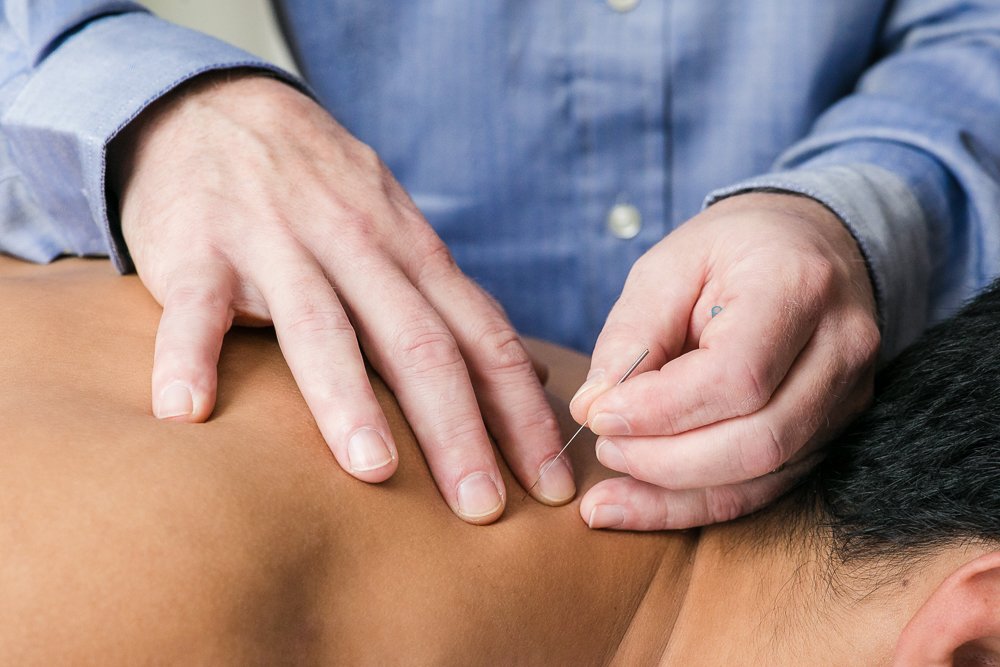
Trigger Point Dry Needling
Relieve Pain and Tightness with Trigger Point Dry Needling
Discover the Benefits of This Natural and Effective Treatment for Muscular Pain and Dysfunction
Are you dealing with muscle pain, tightness, or dysfunction? Have you tried various treatments, but found little relief? If so, you may want to consider trigger point dry needling.
What is Trigger Point Dry Needling?
Trigger point dry needling is a form of therapy that involves inserting a thin, sterile needle into a muscle's trigger point or knot to release tension, promote healing, and restore normal function. The needle is dry, meaning no medication or solution is injected, hence the term "dry needling."
The Benefits of Trigger Point Dry Needling
Relieve Pain and Tightness: Trigger point dry needling can help relieve muscle pain and tightness, especially in areas that are hard to reach with massage or other manual therapies. By releasing tension and improving circulation, dry needling can also help reduce inflammation and promote healing.
Improve Mobility: Dry needling can help improve joint range of motion and flexibility by releasing tight muscles and restoring normal muscle function. By reducing muscle imbalances, dry needling can also help prevent future injuries and improve overall movement patterns.
Promote Overall Well-being: Dry needling can help reduce stress and promote relaxation by stimulating the release of endorphins and other natural pain-relieving substances. By improving sleep and reducing anxiety, dry needling can also help improve your overall mental and emotional well-being.
Fewer Side Effects: Unlike many prescription medications, trigger point dry needling is a natural and non-invasive form of treatment that has few side effects and is generally well-tolerated. It can be used alone or in combination with other forms of treatment, such as physical therapy, massage, or chiropractic care, to achieve optimal results.
Trigger point dry needling is a safe and effective way to relieve muscle pain and tightness, improve mobility, and promote overall well-being. Whether you're an athlete or simply someone who wants to improve your quality of life, trigger point dry needling may be able to help. To learn more about trigger point dry needling or to schedule an appointment, contact us today.
Frequently Asked Questions about Trigger Point Dry Needling
Q: What is trigger point dry needling?
A: Trigger point dry needling (TPDN) is a form of therapy used to treat muscle pain and tension. It involves inserting thin needles into specific points on the body, called trigger points, to release tension and promote healing.
Q: Is trigger point dry needling painful?
A: The insertion of needles can be uncomfortable, but most people report little to no pain during the therapy session. Some people may experience temporary soreness or bruising at the needle insertion site, but this usually goes away quickly.
Q: Is trigger point dry needling safe?
A: Trigger point dry needling is generally considered safe when performed by a qualified and experienced practitioner. However, there is a small risk of complications, such as infection or nerve damage (1 in 200,000). Your practitioner should discuss the risks and benefits of trigger point dry needling with you before beginning the therapy.
Q: How long does a trigger point dry needling session last?
A: Trigger point dry needling sessions typically last between 20-60 minutes, depending on the area of the body being treated and the severity of the condition being addressed.
Q: How many trigger point dry needling sessions will I need?
A: The number of trigger point dry needling sessions needed varies depending on the individual's condition and response to therapy. Some people experience relief after just one session, while others may require several sessions to achieve optimal results.
Q: Are there any side effects of trigger point dry needling?
A: As with any medical therapy, there is a risk of side effects with trigger point dry needling. The most common side effects include temporary soreness or bruising at the needle insertion site. More serious side effects, such as nerve damage or infection, are rare but can occur (1 in 200,000) .
Q: Who should not get trigger point dry needling?
A: Trigger point dry needling may not be suitable for everyone. People with certain medical conditions, such as bleeding disorders or infections, may need to avoid trigger point dry needling. Additionally, pregnant women should avoid trigger point dry needling, as the therapy has not been studied extensively in this population.
Q: How can I find a qualified trigger point dry needling practitioner?
A: It is important to find a qualified and experienced practitioner when considering trigger point dry needling therapy. Look for a practitioner who is licensed and certified in the practice of trigger point dry needling, and who has experience treating patients with similar conditions to yours. You can also ask for recommendations from your healthcare provider or search for practitioners online.

